Seasons – Summer 2013

Dear friends of Plateau,
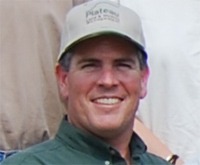
Director of Sales, Tim Milligan
Today marks the summer solstice when the Sun reaches its farthest point north of the equator, and we are blessed with the longest daylight hours of the year. The word solstice is from the Latin solstitium, from sol (sun) and stitium (to stop), reflecting the fact that the sun appears to stop at this time (and again at the winter solstice). This reminds us to slow down a bit this season and make time for the things that matter most- like fishing with family, as we’re reminded of in the picture above. This bass was caught by Christian Lee Swanson, son of Romey Swanson, Plateau Senior Biologist, on Father’s Day at their home pond.
We hope you take some of these extra daylight hours to read through this issue of Seasons which is chock-full of great information and entertaining stories- perfect for poolside, lakeside, or shore side reading. We cover some of the highlights from this year’s wildlife management plan season, make sure you’re staying informed and up to date on your wildlife management activities this summer, share some adventures and close encounters with wildlife, and even manage to fit in a little bit of legal advice to make sure you’re protecting your land and other financial assets to the best of your ability.
We hope you enjoy this issue of Seasons and all that this summer has to offer.
Until next season and Seasons,
Tim Milligan
Director of Sales
Plateau Land & Wildlife Management
(512) 894-3479
[email protected]
Table of Contents
Plateau by the Numbers
Mission Mentions: When a Plan Comes Together
Summer Wildlife Management Activities Checklist
Catch Some Knowledge this Summer with Plateau Webinars!
Game Management Video: Supplemental Water in the Summer
Close Encounters with Dangerous Wildlife
Insights and Inspirations from my Spring Trip to Big Bend National Park
Legal Tip #1: Landowners should not hold property in their own name, except their homestead
Get to Know Plateau
Plateau by the Numbers
By Erica Fick, Marketing Coordinator
Each year, from November-April 30th, Plateau experiences what we call ‘Plan Season’ when everyone in the company joins together as a team to write, renew, and update hundreds of wildlife management plans for existing and new Plateau clients. Every Plan Season is busy- and there are many important people that go into making each plan season a success (see Craig Bowen’s article, Mission Mentions to read more on this)- but this year we hit some particularly impressive milestones. We’d like to share some of these statistics with you including the number of plans and acres converted to Wildlife Management and would also like to thank you, our clients, for helping to make Plateau the most well known and widely used name in the industry.
Back to TopBack to Top
Mission Mentions: When a Plan Comes Together
By Craig Bowen, Account Manager, East Service Region
Mission Mentions is meant to be a quarterly highlight of an outstanding Plateau team member doing great work on a consistent basis. But this Seasons, it would be impossible for me to write that article. That’s because I’d like to focus the attention of this Mission Mentions on “plan season:” the period from November-April 30th when our entire team comes together to create just one of the hundreds of wildlife management plans we write each year. To highlight just one individual in this multifaceted, team effort would be missing the point: that the sum of many moving parts is what makes a Plateau wildlife management plan come together.
In the Beginning…
A wildlife management plan begins as an idea, just a simple notion that maybe a piece of land somewhere is not reaching its potential. Maybe the owner is not getting as much enjoyment as possible out of the property, or maybe he or she just realizes it was meant for something else. Whatever the reason, as soon as they finish dialing Plateau’s number and Emily Schleh or Kari Sherman answers the phone, a wildlife management plan is born.
The Sales Team
The call goes directly to the Account Manager assigned to the county from which the landowner is calling, and either Kasey Mock or I discuss options, solutions, and pricing. Many times, Kasey and I are on the road or in meetings, and Kameron Bain helps us out by entering the new landowner’s name and information into the system, and sometimes sends him or her the Agreement.
The Biology Team & Products and Services
Once a landowner receives an Agreement, the Account Manager or Kameron may need to field questions before it is signed and sent back to confirm the order. Once the Account Manager or Kameron receives the order, it is passed the Biology Department, where Kyndal Anderson processes it, documents it with the Accounting Department, and sends it to James Hall, who assigns a biologist to the landowner. Shane Kiefer, Mark Gray, Romey Swanson, or James himself is assigned to the landowner, and they make contact within 2 business days to schedule a site visit. After the site visit, the biologist brings all the collected data back to the office, and the Biology Team collectively constructs the wildlife management plan. The Products & Services team gets involved at this point, as they control the mapping department which creates all the maps associated with the landowner’s property.
At this point, the completed plan is sent back to Kyndal Anderson, who pairs it with the appropriate application and other forms and sends it to the client for review and approval. Once the biologist and Kyndal make any necessary changes and answer any questions the landowner has, the plan is bound into a Central Appraisal District packet by Kyndal, Kari, and Julie, and sent by certified mail to the appropriate CAD.
The Administration Team
Once the plan has been delivered to the Appraisal District, Kyndal manages the creation of a resource notebook with the help of various members of the team including Julie Mitchel, our Human Resources manager and Kari. This notebook is the tool Plateau landowners will use to help maintain their wildlife management valuation for years to come and contains the plan, maps, documentation information, and other useful tools. Kyndal later follows up with the CAD to ensure the plan was processed through their office and accepted, and notifies the Account Manager and Kameron, who relay the good news to the landowner.
Plateau Stands Above the Competition
Plateau has spent the better part of 2 decades honing this process, and it involves a lot of people and moving parts. There are a few other great wildlife management companies out there who write wildlife management plans, but none of them reach the level of professionalism and attention to detail as Plateau. Our team of account representatives, biologists, products and services team members, administration staff, and managers are simply the best anywhere, and hopefully knowing a little about how we do business helps you to understand just how much we love it “when a plan comes together.”
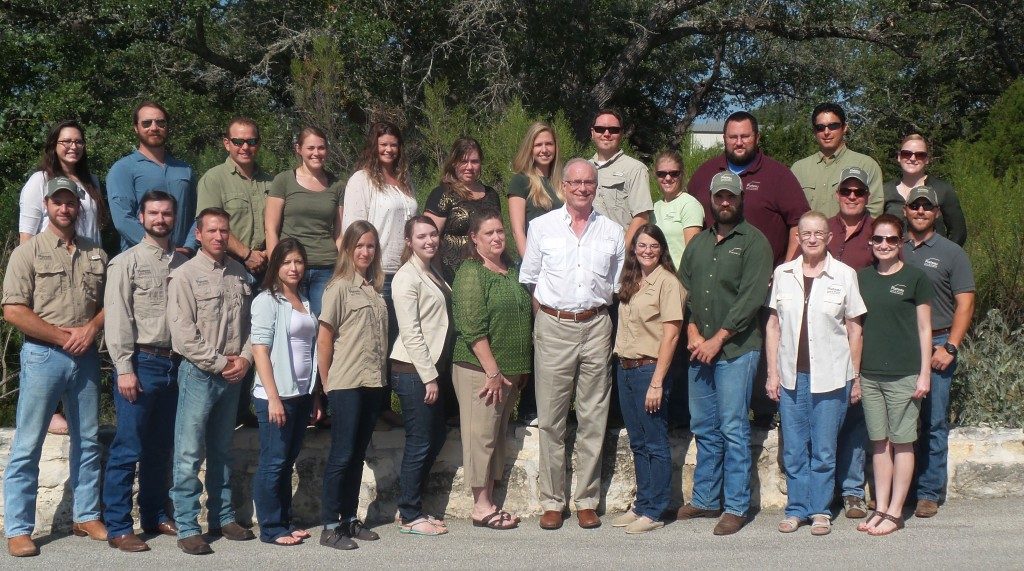
Summer Wildlife Management Activities Check List
By Kameron Bain, Business Development Manager
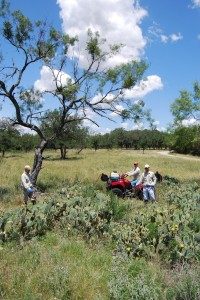
Late Summer is a great time to treat prickly pear cactus
What a great and cool spring we had! Hopefully it will make the transition into summer a little easier for Texans. While summer is a relaxing and fun time of the year for a lot of us, it is important that you don’t forget about your property. July marks the half way point of the year, which means you should be well on your way to implementing your Wildlife Management Activities. Even though it is a hot and humid time of year, there is still a lot that can be accomplished for Wildlife Management landowners:
- Small Mammal Surveys
- Deer Surveys– start in August
- Pond Construction
- Pond Renovation and Repair
- Imported Red Fire Ant Control
- Strip Mowing- late July and August
- Half-Cutting of Trees and Shrubs
- Supplemental Water Maintenance
- Chemical Control– late summer is a good time to treat prickly pear
- MLDP Paperwork– due August 15
Back to TopBack to Top
Catch Some Knowledge this Summer with Plateau Webinars!
By Hope Bolton, Sales and Marketing Assistant
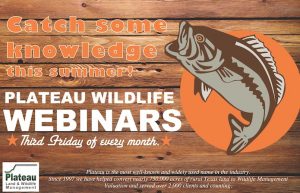 Plateau Webinars are back! These free and informative presentations are a great way to catch up on the wildlife topics that matter most to you from the comfort of your air conditioned home, office, or mobile device. The open forum nature of webinars also allows attendees to ask questions and get answers from Plateau’s knowledgeable land and wildlife professionals.
Plateau Webinars are back! These free and informative presentations are a great way to catch up on the wildlife topics that matter most to you from the comfort of your air conditioned home, office, or mobile device. The open forum nature of webinars also allows attendees to ask questions and get answers from Plateau’s knowledgeable land and wildlife professionals.
Summer webinars begin TODAY June 21st and will be held every third Friday of the month from 12-1 PM through August. Topics that will be covered are below.
Here’s what one Plateau client is saying about our webinars:
“I’ve enjoyed each webinar & learned something new at each one. We are in our third year under Wildlife exemption and really look at the land from a whole new perspective!
- TODAY!– June 21th– Supplemental Water and everything you need to know about this essential Summer wildlife management activity.
- July 19th– Mid-Year Check-Up for Wildlife Management Activities in the months of July-December. Learn about the best activities to focus on so you don’t fall behind.
- August 16th– Wildlife Management Valuation, an open forum to ask any and all questions you’ve ever had about wildlife management valuation. Whether you’ve been in wildlife for years, or just considering it for the first time, we guarantee you’ll learn something new.
Visit our full webinar schedule for the list of topics that will be discussed. We hope to see you at one of these highly informative and interactive events!
Back to TopBack to Top
Game Management Video: Supplemental Water in the Summer
By Kasey Mock, Account Manager, West Service Region
Texas is hot, dry, and harsh. That is why it’s so important to maximize the potential in every drop of rainwater and groundwater. It is expected to be another hotter and drier than average season, so if you are concerned about the native wildlife residents on your property and are looking to fulfill another wildlife management activity this summer, providing a supplemental water source is a great way to accomplish both of these goals. In this video, Kasey Mock talks more about the importance of supplemental water to game management, and presents some basic tips on providing supplemental water during the hottest months in Texas.
Plateau Supplemental Water Solutions
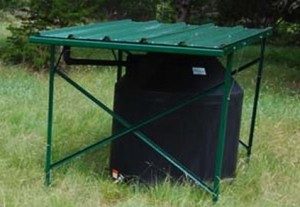
Water Table 305 is perfect for attracting wildlife
Water Table 305
- Powder-coated frame, legs, and bracing material for a durable finish.
- Heavy gauge steel roofing panels.
- Downspout/plumbing designed to restrict varmint entry and consequent damage, as well as make assembly faster with less likelihood of leaking.
- 305 gallon black poly tank prohibits UV transfer to reduce algae issues.
- 5′ x 8′ roof (40 sq feet) catches 22.5 – 24.5 gallons per inch of rain.
- Galvanized, low to the ground watering pan allows easy access (and exit) for all types and sizes of wildlife.
- Freeze-resistant system helps guard against busted floats or lines.
$1195* or $1495 installed**
* Plus tax ** Plus tax and mileage
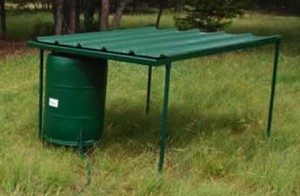
Collect rainfall and water runoff for wildlife in areas where water is limited
Water Table 55
- Sturdy 5′x6′ powder-coated steel construction for years of durable, rust-resistant service.
- Heavy gauge roofing panels.
- Recycled/repurposed 55 gallon drum blocks UV penetration to reduce algae build up.
- Galvanized, low to the ground watering pan allows easy access (and exit) for all types and sizes of wildlife.
- Freeze-resistant system helps guard against busted floats or lines.
$695* or $795 installed**
* Plus tax ** Plus tax and mileage
Close Encounters With Dangerous Wildlife
By Erica Fick, Marketing Coordinator
Plateau’s Wildlife Field Technicians are the feet-on-the ground operation of our company. Most of the time, this job is rewarding, fulfilling, and envied by many who work in the office at Plateau since these guys are out in nature every day. However, there are times when their job can be dangerous and even life threatening- especially when wildlife attack. Most recently, our techs had two close encounters with aggressive wildlife that taught us all some important lessons that we’d like to share with our landowners.
A Feral Hog Face-Off
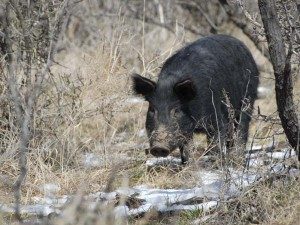
“I heard something rustling around in the brush, then snarling and grunting”
It was a cloudy, early morning in Manor, TX and the birds were singing. Lee Kothmann, Plateau Wildlife Services Technician Manager was out on a property just east of Highway 130 conducting a Breeding Bird Survey when he had his first encounter with a charging, wild hog. He was alone, with only a machete to defend himself, and staring down one of Texas’s most reviled invasive species.
“I heard something rustling around in the brush, then snarling and grunting,” explains Lee. Trapped in a small clearing in what was 100 acres of thick mesquite, Lee responded calmly as he’d learned to do in other trainings and personal experiences with large, aggressive mammals. “Before I knew it the hog had rushed out and was in the clearing with me. We locked eyes and it charged right at me till we were about 15 feet apart. Then it stopped, backed into the brush, and charged again.”
This kind of behavior is fairly typical of a large mammal that is trying to stand its ground or scare you. So Lee stood his ground as well to determine whether or not the hog was ‘bluffing.’ The hog eventually backed off, retreating back into the mesquite, leaving Lee confused as to why it charged in the first place. “We were in a very dense area of brush bordered by a field, so maybe it felt trapped and threatened by my presence. It’s also possible that it was protecting some young that I just couldn’t see in the thicket.”
Lee cautions landowners to be aware of their surroundings at all times when enjoying their land and to follow a few basic rules if you find yourself in a similar situation with a feral hog in the wild:
- Avoidance is your first line of defense: Though we can’t always control what we’ll encounter in the wild, avoidance of potentially dangerous interactions with wildlife is the best measure to ensure your safety. If you spot a hog with piglets nearby, give it space. If you find yourself in a narrow passage or opening, be very aware of your surroundings. No wildlife likes to feel trapped- not even humans.
- Get to high ground: Feral hogs can’t climb, so if you’re near a tree, deer blind, large rock, or some other structure that can get you off the ground, climb up there and stay until the hog backs down.
- If a true attack ensues, yell and throw rocks: If you’ve stood your ground, there’s no higher ground to get to, and the hog charges within 10 feet of you, you may need to engage in some more aggressive threatening. Often times a healthy dose of intimidation can scare a hog off.
- Striking with a weapon should be a last resort: When facing off in close- proximity with a large, threatening mammal like a feral hog, you should avoid attacking the animal with a weapon (gun, knife, etc.) unless absolutely necessary. A misfire or non-lethal blow may only injure the animal, throwing it into survival mode and making it even more aggressive towards you than it was to begin with.
Though Lee’s experience with this feral hog was certainly a close encounter, it is rare that they attack and injure. “It’s in their best interest not to get in a fight with a large mammal, so in most cases, they’ll avoid direct conflict with humans unless they feel threatened in some way,” confirms Lee. But, as the old saying goes, ‘It’s better to be safe than sorry.’
Something Sharper than Prickly Pear
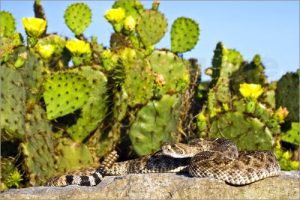
“…if it hadn’t been been for the snake guards Chance was wearing on his legs, he probably would have been seriously injured.”
Late spring in Texas is a great time to treat prickly pear cactus, and that’s exactly what Wildlife Technician, Chance Boatright was doing when he encountered his first rattlesnake in five years of living in Central Texas.
It was about 11:45am and just pushing 80 degrees- prime ‘snake time,’ according to Chance- when he and Steve Parker, Plateau Products and Services Manager, were chemically treating a large, over-grown pasture full of mature prickly pear bushes that was previously used for grazing in southwestern Bell County. “I reached around a larger statured prickly pear with my chemical spray arm,” explains Chance, “and with no warning, a rattlesnake struck me on my ankle.”
The 4 ½ foot-long rattlesnake was probably sleeping under the shade of that prickly pear as the day was warming, and if it hadn’t been for the snake guards Chance was wearing on his legs, he probably would have been seriously injured.
This was the first time Chance had ever been struck by a rattlesnake, and even though his dad used to catch and sell rattlesnakes all the time in West Texas where he grew up, he admits that it was pretty scary. “I don’t do well with snakes to begin with,” he explains. “In fact I try to avoid them at all costs, and in the five years I’ve been living here, I’ve never even seen a rattlesnake in the Hill Country. So it was a pretty big surprise to have one jump out and strike me.”
Fortunately, Plateau has very strict safety policies that it requires all Wildlife Field Technicians to follow when out on our clients’ properties, so Chance escaped the close encounter unscathed. “We did call Damon (another Plateau Field Technician) right after it happened though to make sure he was wearing his snake guards,” Chance admits. “They always strike when you least expect it.”
Resident Plateau ‘snake-wrangler,’ Romey Swanson compiled a few rules of thumb to help our readers avoid any close encounters with rattlesnakes or other harmful snake species:
- If it looks brushy and snaky, stay away from it. Chances are, if you think there’s a snake somewhere, your intuition is probably right.
- If you’re doing work on your land, wear tall, thick boots or snake guards.
- Prime ‘snake time’ is usually dictated by temperature since snakes have to thermo regulate. This translates to weather that is over 60 in winter, and under 80 in the summer.
- Keep the grass cut in the areas where you walk and recreate.
- Keep a clean yard. “The more piles of stuff they have to hide under and shade themselves, the more they’re going to take advantage of that,” explains Romey.
- Cluttered barns are hotspots for snakes, so keep your barn/structures clutter-free.
- If you have a rat/rodent problem, you’re going to have a snake problem; most snakes that end up in houses are looking for rats.
- Keep your land wild. “There’s no reason to go out and start exterminating snakes on your property,” Romey explains. “Snakes- even venomous ones like rattlesnakes- play an important role in the ecosystem, so don’t go out hunting them.”
Plateau Field Technicians: Facing Danger So You Don’t Have To
Probably the best lesson to learn from these stories is that land stewardship is no joke, and it requires special knowledge to be safe and successful. Out on rural, open rangeland like the kind Plateau specializes in managing, Texas can still be a very dangerous place. That’s why many of you rely on Plateau to do the hard work for you; so you can focus on the good stuff: hunting, horseback riding, fishing, and relaxing with family. Of course it’s always important to know the risks and precautions of being out on the land, but the next time you’re crawling through thick brush, or wrestling with prickly pear, just remember- Plateau can help.
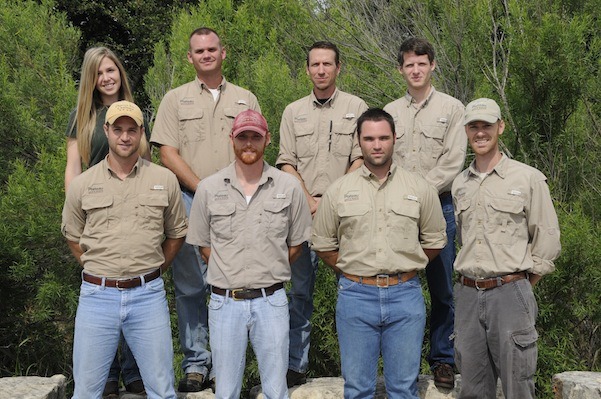
The knowledgeable Products and Services Team is here to help, and take a bite on the leg from a rattlesnake for you.
Insights and Inspirations from my Spring Trip to Big Bend National Park
By Romey Swanson, Senior Plateau Biologist
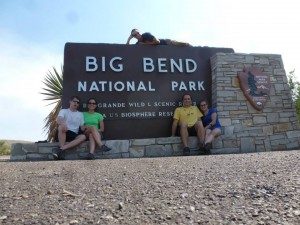
We made it to Big Bend!
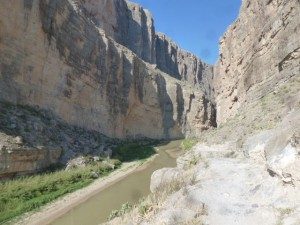
The Rio Grande
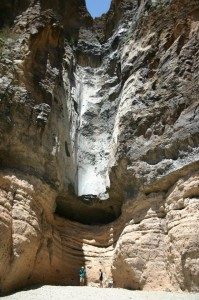
Santa Elena Canyon
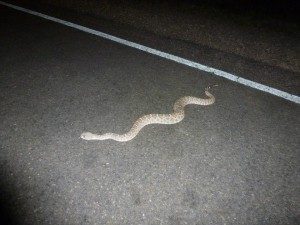
Western Diamondback Rattlesnake
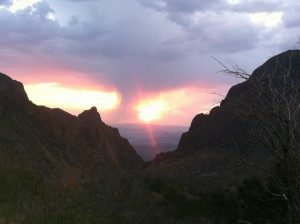
The Window
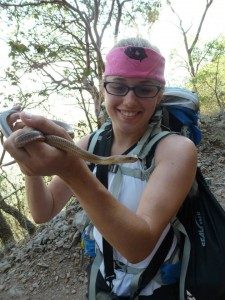
Erin has no fear and caught this cool slithering reptile, the Baird’s ratsnake.
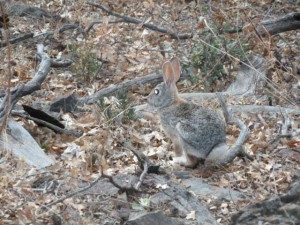
Davis Mountains Cottontail
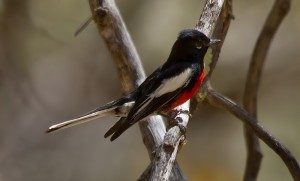
Painted Redstart
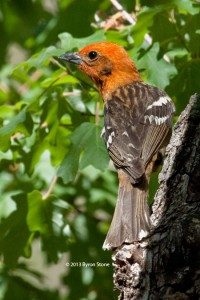
Flame-colored Tanager
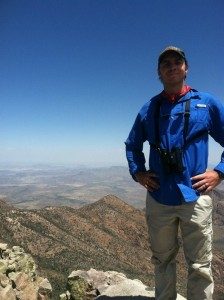
Romey admiring the view from Emory Peak
This May, I was fortunate enough to visit Big Bend National Park with my wife and some friends for six days of hiking, backpacking, nature watching, and otherwise enjoying the desert and mountains of Big Bend National Park. During my stay I was able to record some of the more meaningful observations I experienced in a field journal I took with me. This article is an excerpt from these entries, and includes some exciting wildlife sightings during this very active season in the high desert.
Big Bend is named for the dramatic change in course that the Rio Grande takes along the southern boundary of the park, a feature that is noticeable on any map of Texas. It encompasses several habitats from riparian corridors and drainages (arroyos) to desert scrub, to mountain forest. Big Bend is the only national park that encompasses an entire mountain chain (Chisos) but also provides legendary 100+ mile vistas of the surrounding deserts and mountains. Big Bend also boasts the largest documented species richness of cacti, birds, reptiles and bats of all our national parks! An instant draw for any naturalist.
May 22, 2013 – Prairie Dog Town near Marathon, Texas
Approximately 7.5 miles northeast of the town of Marathon, along Highway 385, exists a sizable black-tailed prairie dog (Cynomys ludovicianas) colony. This species’ range and abundance is but a shadow of what it once was. Every time I come across a prairie dog town, I stop to watch these curious mammals and listen to the various barks, chips, and other sounds they make. Prairie dogs exhibit a somewhat advanced vocabulary used for various forms of communication with one another. The primary reason I stop though, is to look for Burrowing Owls. Burrowing Owls are Texas’ only diurnal (active during daylight hours) owl, and they utilize old prairie dog tunnels for nesting and roosting cover.
While exploring the deep canyon gash (Santa Elena) caused by powerful floods of the Rio Grande, I observed two Gray Hawks (one adult and one juvenile) interacting and occasionally aligning on the upper canyon walls (Texas side). This species is a local breeder along the Rio Grande and has only recently re-established in the Trans Pecos, primarily in the areas of the Rio GrandeVillage and Cottonwood Campground in BBNP. The reestablishment of Gray Hawk is directly related to the presence of mature cottonwood, willow, and mesquite stands that were previously cut and utilized by early settlers and industry. The species was mostly absent from the Big Bend region during the 1900’s, but is now a local breeder during spring and summer months.
May 23, 2013 PM – 3 snake night
Tonight I am camping at Government Spring, which is in the upper desert flats north of the Chisos Mountains. The desert is a wonderful camping destination during late evening through early morning, with amazing star watching clarity during dark hours. We were treated to a colorful sunset over the Rattlesnake and ChristmasMountains. Shortly after sunset, we witnessed the tight triangle formed by Juniper, Mars and Venus in the western sky. The Milky Way was fully visible throughout the night and the various stars provided an inspiring backdrop for conversation and cold Shiner Bock. Lee Kothmann (Plateau Wildlife Services Technician Manager) and I decided to top off water containers for the group at Panther Junction (a three mile drive east from our camp) before relaxing for the evening. During the drive, we found and observed three snakes: Texas long-nosed snake (Rhinocheilus lecontei), western diamondback rattlesnake (Crotalus atrox) and gophersnake (Pituophis cantenifer)- all common, but nonetheless excellent finds!
May 24, 2013 – Sunset over the Window
Today’s relaxed evening was enjoyed at the old stone cottages of theChisosBasin. These cottages were built by the Civilian Conservation Corps (CCC) during the 1940’s. The CCC was instrumental in establishing many of the popular trails, original facilities, and Green Gulch Road (the only road to The Basin) before the park opened. A sense of appreciation was shared by my group as we took to scrambling atop a nearby boulder and watched the sunset through The Window (a scenic mountain bound pour-off at the end of the primary basin drainage). A nice post-supper port was shared by all.
May 25, 2013- Boot Canyon overnight backpack trip with intent to find Flammulated Owl and Painted Redstart. Baird’s rat snake. Davis’ Mountains cottontail.
Today began with the group preparing for the overnight backpack trip to the high country with an intent to stay overnight at Boot Canyon Campground 2. Although this was originally intended to be a leisure trip, it quickly found additional purpose with group members expressing intentions and goals. These ranged from observing rare birds to completely hiking the South Rim to plainly not running out of water (not getting eaten by a black bear was another). Each of us donned 35-50 pound backpacks loaded with gear, food and water. Despite the weight and awkward arrangement, my wife, Erin found and caught a Baird’s ratsnake (Pantheropsis bairdi) just below the rocky pinnacles that lend the name to the Pinnacles Trail. This was the first time anyone in the group had seen this species and is now a thing Erin will hold over my head! Several photographs were taken.
The entire hike to the canyon took approximately three hours and put us at the first destination around 12:30 PM. After making camp, eating a quick lunch, and taking long hot naps, we took to hiking to finish out the South Rim Trail. The South Rim provides unparalleled vistas throughout the southern portion of the park and into Mexico. Near thousand-foot sheer cliffs provide vertigo-inducing excitement and excellent photo opportunities. We finished out the hike back to camp via Colima Trail, with a final noteworthy observation: a Davis Mountains cottontail (Sylvilgus robustus). This mostly familiar rabbit (closely related to the eastern cottontail, S. floridanus) is found primarily throughout the mountainous regions of the Trans-Pecos, southern New Mexico, and the Sierra de la Madera mountains of Mexico.
During the evening and night, I was able to observe two species of bird that were big goals for this trip. Painted Redstart are gorgeous black and red warblers that breed almost exclusively (in Texas) within the Chisos and DavisMountains. A bright male was observed on several occasions at our camp site and calling throughout BootCanyon. The other, Flammulated Owl, is another high country breeder. A single owl was heard repeating its low “booot” (how appropriate!) call throughout the night within BootCanyon. Despite several attempts to “call” it in by duplicating the call, I was unsuccessful at visually observing this owl. However, I did get it to perch closer to the group.
May 26, 2013- Golden Eagle at Emory Peak
When we woke the next morning, most of the group trekked out in search of the now famous, Flame-colored Tanager. We met with a nice Houston area birder also searching for this species. FCTA was heard first by the Houston birder but everybody wanted visual confirmation. We searched for approximately 30 minutes before I found a female Western Tanager which I had previously noted in association with our male FCTA. After another couple moments I located the Flame-colored male, but at an angle and distance that I was unable to put anybody else on. The bird flew up canyon and we all suspected that was the end of our opportunities. Persistence, however, paid off and I was able to relocate him with his female friend atop a dead Arizona cypress. This time I was able to put my wife on the bird but not the other members or the Houston birder (he was up canyon from me). Erin and I left shortly after this to break camp and prepare for the descent from the high country. Fortunately, we later found out that everybody that searched for the bird that day was able to visually observe it!
During our search for FCTA, everybody in the group was also able to visually and audibly observe a Colima Warbler. This species is only know to breed (in the US) within the ChisosMountains of BBNP.
The highland trip ended with a quick excursion along the 1.6 mile (one way) Emory Peak Trail to the highest point in the park (7,825 ft). From just below the peak, I was able to briefly view a Golden Eagle (GOEA) soar past our group before becoming hidden behind the final sheer walls of the mountain. Golden Eagles are formerly common in the Big Bend region, but now an uncommon and exciting species to see. Golden Eagles were heavily persecuted during the ranching days of the Big Bend as a heavy predator of young goats and sheep. Though there is no doubt that GOEA did occasionally prey on livestock, their affect on local goat and sheep herds were likely minimal. The few resident and breeding GOEA that occupy Big Bend are more reliant upon black-tailed jackrabbits (Lepus californicus) and a mix of other prey species.
While photographing the landscape atop of Emory Peak, we were treated to the acrobatic exploits of a handful of White-throated Swifts. This somewhat familiar species (similar in shape, but different in pattern and color to our common Chimney Swift) provided unique entertainment by continually dive-bombing and zooming by within feet of us. The sound produced was similar to a miniature jet and, at the beginning or the experience, I swore someone was flying a radio-controlled airplane near us. I assume these acrobatics were either (or both) interacting with one another or feeding, though I can’t be certain.
Back to TopBack to Top
Legal Tip #1: Landowners should not hold property in their own name, except for their homestead
By David Braun, Co-Founder & CEO of Plateau, and Principal of Braun & Gresham, PLLC
This blog is part of the on-going monthly series, Top Ten Legal Tips for the Owner of Rural Land In Texas. Through this series, we hope to help owners of Texas rural land better understand the extent of their rights, and even discover some new ways to protect and preserve their land for generations to come.
When someone owns land in his or her own name, they are very likely increasing their risk of loss from accidents or creditor’s claims unnecessarily. Accidents on farm and ranch land happen every year and create liability for landowners – sometimes forcing liquidation of family land or loss of other major assets. It is often wiser to own land through a limited liability entity like an LLC, a Limited Partnership, or an irrevocable trust, so that the liability is isolated from other assets. These entities also protect the land from other personal and business creditors.
A major exception to this tip is for Texans who live on their land, because Texas law gives even greater protection from creditors for homesteads. A rural homestead can include up to 100 acres for an individual or 200 acres for a married couple. For owners of more than 200 acres who live on their land a combination of strategies may provide the best protection. Successfully claiming the full rights to homestead protection often requires pro-active legal steps, which we will cover later in this blog series as part of Tip #3.
Modern Rural Landowners Should Take Extra Care
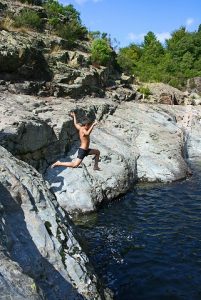 Hunting, swimming, horseback riding, and 4-wheel driving are all common outdoor activities that can be dangerous and result in accidents on private land. A majority of modern rural landowners are actually city dwellers who own second homes on rural properties, where they invite guests for recreation. Hosting friends and family on these properties is one of the joys of land ownership, but innocent recreation can turn into tragic accidents when the guests are not trained and familiar with the dangers. Extraordinary care should always be taken to prepare and protect guests from accidents. But, wisely protecting financial assets is also part of managing the risk of land ownership.
Hunting, swimming, horseback riding, and 4-wheel driving are all common outdoor activities that can be dangerous and result in accidents on private land. A majority of modern rural landowners are actually city dwellers who own second homes on rural properties, where they invite guests for recreation. Hosting friends and family on these properties is one of the joys of land ownership, but innocent recreation can turn into tragic accidents when the guests are not trained and familiar with the dangers. Extraordinary care should always be taken to prepare and protect guests from accidents. But, wisely protecting financial assets is also part of managing the risk of land ownership.
Limited liability entities protect assets from two directions. By isolating a farm or ranch in an entity and managing it as an asset of that entity, the land is protected from business and personal creditors, and in turn other assets are protected from accidents that create liability in excess of the value of the land. The key is limiting liability to its source. A business setback or a medical crisis does not have to force the sale of beloved family land, nor does an accident at the ranch have to burden a personal business or force the sale of other prized assets.
An Entity is a Multi-Use Tool
The choice of an entity to own a farm or ranch is very dependent on the specific facts and situation of the owners. In addition to liability protection, an entity can be a very useful tool for estate planning which can open up other considerations when choosing an entity to accomplish multiple goals. Consultation with an attorney, and possibly a CPA, is essential for choosing between partnerships, trusts and other liability limiting entities. One size does not fit all, so it is important to consider all the goals for the land and the family in consultation with a broadly qualified professional.
Estate planning for a landowner can include many goals. Owning and caring for land is a big job learned over many years. Younger generations benefit by gaining experience over time. A partnership or a family company provides a method for sharing knowledge before turning over complete control. As younger family members become more involved, shares of ownership can be transferred, and responsibilities can be shared and shifted gradually over years. The entity also gives a method for gifting or selling the land between many family members without fragmenting the land. Finally, by owning the land in an entity, a family can avoid significant court costs and legal fees when the principal owner dies or becomes disabled.
Risk Management Requires Diligent Maintenance
Setting up an entity is just the beginning of managing risk and liability. The entity must maintain records and be operated for a business purpose. Without legitimate operations, a court may decide that an entity is a sham which is not deserving of limited liability. Annual meetings, tax returns and otherwise maintaining a business purpose may be necessary if the entity is to be successful in fulfilling its function. Again, consultation with a competent professional is the best way to know for sure that the entity is being operated correctly. Braun & Gresham has an entire practice area devoted to helping landowners with risk management.
At Braun & Gresham, we represent many landowners with many different stories. It constantly amazes us how often we encounter landowners who own their non-homestead land in their own name. Whether motivated by liability or estate planning, or some other issue, it is a fundamental tenet of modern land ownership that holding such a major asset by an entity ought to be considered. The peace of mind it brings and the numerous problems that it can solve is usually worth the effort and cost of creating an entity to hold your precious land.
To learn more about this topic, consider attending David’s webinar on Risk Management for Owners of Rural Land, July 30th from 12-1pm. CLICK HERE to learn more.
Back to TopBack to Top
Get To Know Plateau
By Kameron Bain, Business Development Manager
Last issue of Seasons, we ran a special edition of Get to Know Plateau in which we gave abbreviated versions of our typical GTP articles in order to give a quick introduction of some new additions to our team. This issue, we’ll be getting to know two of these new staff members a bit better in these full-length features.
Damon Speidel | Wildlife Service Technician
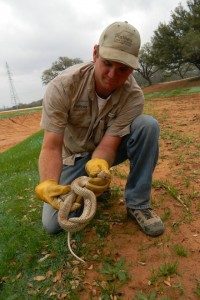 Damon Speidel is one of the members of our team that may have taken a different path to get to Plateau, but like all of us, his dedication and passion for wildlife has made him a perfect addition. Not only do his hobbies include science , nature, and fishing, but he’s also an avid traveler – he has been to Europe several times as well as Central and South America. He also enjoys making short films and has worked on several feature films and commercials.
Damon Speidel is one of the members of our team that may have taken a different path to get to Plateau, but like all of us, his dedication and passion for wildlife has made him a perfect addition. Not only do his hobbies include science , nature, and fishing, but he’s also an avid traveler – he has been to Europe several times as well as Central and South America. He also enjoys making short films and has worked on several feature films and commercials.
Before working with Plateau, Damon earned a Bachelor’s degree in Criminal Justice from Texas State University. He is currently a Wildlife Services Technician in the Dripping Springs office, spending most of his time on landowners’ properties implementing a wide variety of wildlife management products and services . What landowners do not see is all the time Damon and his fellow technicians spend staging and preparing each job to ensure quality, accuracy, and proper documentation. And the best part is that Damon does this all with a big smile. “You’ll be hard pressed to find another Wildlife Services Technician as congenial as Damon,” explains Products and Services Division Manager, Steve Parker. “He always brings a positive attitude every day. It’s always a proud moment for me to hear from a client saying how pleased they were with the experience they had visiting with Damon on their property.”
Working at Plateau has given Damon the chance to explore nature, learn, and see wildlife he has only seen in photos. He also enjoys the calm and relaxed work environment, as well as the easy-to-work-with and kind co-workers.
Julie Mitchell | Human Resources Manager
 Julie Mitchell’s experience and cool, calm demeanor has allowed her to move effortlessly into her new role as Human Resources Manager for both Plateau and sister firm, Braun & Gresham, PLLC. The whole staff is already noticing the impact she is making in her first year here. “Julie has already made a great contribution to Plateau in the short time she has been here,” says Products and Services Division Manager, Steve Parker. “She is making improvements to Human Resources that help us streamline an integral part of operations.”
Julie Mitchell’s experience and cool, calm demeanor has allowed her to move effortlessly into her new role as Human Resources Manager for both Plateau and sister firm, Braun & Gresham, PLLC. The whole staff is already noticing the impact she is making in her first year here. “Julie has already made a great contribution to Plateau in the short time she has been here,” says Products and Services Division Manager, Steve Parker. “She is making improvements to Human Resources that help us streamline an integral part of operations.”
After receiving a MBA from Oklahoma City University, Julie managed a law firm for 9 years. She began working at Plateau in December 2012 as a administrative assistant, but was quickly promoted to the Human Resources Manager. As the HR Manager, she takes care of everything from payroll, benefits and hiring, to policy and procedure development, all while still finding the time to help the Admin team.
The Plateau mission and supportive environment are just a few of the reasons why Julie likes to work here: “I enjoy working with people who believe in and are working toward a common goal and mission to preserve our land for many generations to come. I also enjoy that Plateau is supportive of their employees’ growth, contributions, and ideas to improve the company no matter what job position they hold. Everyone’s input matters here whether large or small.”
When Julie is not at the office taking care of the Plateau team, she is spending time with her “very spoiled” dachshund, Larry, cheering on her home state basketball team The OKC Thunder, listening to music, or watching movies. “Every year, I try to make sure I see all the films nominated for the Best Picture OSCAR so I can see if my pick wins.”
Mission Mentions: Kameron Bain
By Craig Bowen, Account Manager, East Service Region

“Anytime I have ever talked to her, she has always been upbeat and willing to help” say Plateau client, Don Ringler.
This installment of Mission Mentions comes to you during a great – even record breaking – year at Plateau. We have so many individuals who deserve credit that I could not begin to thank them all. As you know, in Mission Mentions, my intent is to single out one of these outstanding people and illustrate how they are exemplifying the Plateau mission. This quarter, I would like to fill you in on how Kameron Bain, Business Development and Marketing Coordinator, is doing just that.
The Plateau mission statement is:
“to assist owners of rural land in increasing the value of their property by conserving, restoring and/or improving its native wildlife and habitats through science-based solutions and exceptional customer service.”
Normally, I would give you a specific example of something she has done with a particular client, but after talking to several of our clients, I could not find an example that was any better than my own personal experiences working with Kameron.
Who: Craig Bowen, Account Manager, East Service Region
What: Kameron’s overall dedication to customer service and creating a friendly, helpful atmosphere is a model example for everyone in the office.
When: Kameron joined the Plateau family in 2007.
Where: Dripping Springs office
Why: Kameron says, “Plateau has the best clients and the best team. I can honestly say that one of my favorite aspects of my job is helping and talking to our clients. I look forward to catching up with them every year during Service Agreement and Bird Survey seasons. Being helpful to our team is just so easy. I have never worked with a more supportive group of people and many of them have been crucial to my success – when one of them is out of the office, I feel like I am missing an arm.”
To further prove my point about Kameron’s role model-status, Plateau client, Margaret Branton had this to say: “She has been so smooth and efficient I don’t have any stories. Had we had a struggle with something, there might be a story!”
Another Plateau client, Don Ringler, emailed this comment: “Anytime I have ever talked to her, she has always been upbeat and willing to help. If she is having a bad day, she never lets it show. She does what she tells you she is going to do and when she told you she would. Her emails are the same way: timely and informative. She has always been willing to help and if she can’t, she will get whoever can in contact with you.”
Back to TopBack to Top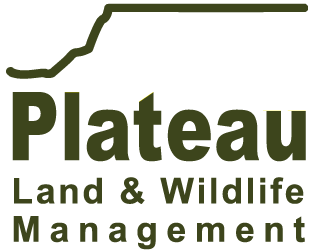

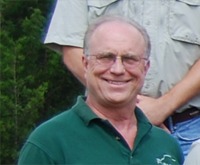




Sorry, the comment form is closed at this time.